The Atlantic Science Enterprise Centre: Emphasizing heritage and research
Visitors of Moncton, New Brunswick, who enter the new home of the Atlantic Science Enterprise Centre (ASEC) will be welcomed by the suspended skeleton of a North Atlantic right whale. It will give them a hint about the centre's mission, which is to understand, protect and sustain Canada's precious Atlantic freshwater and coastal ecosystems for future generations.
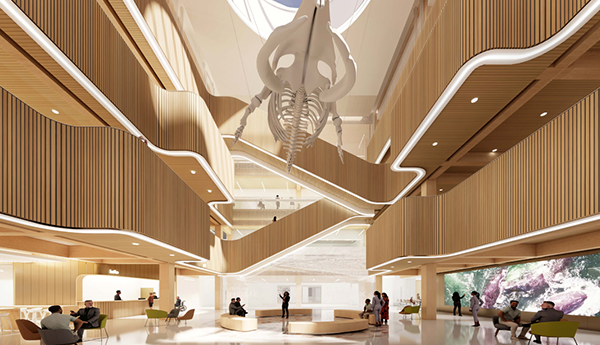
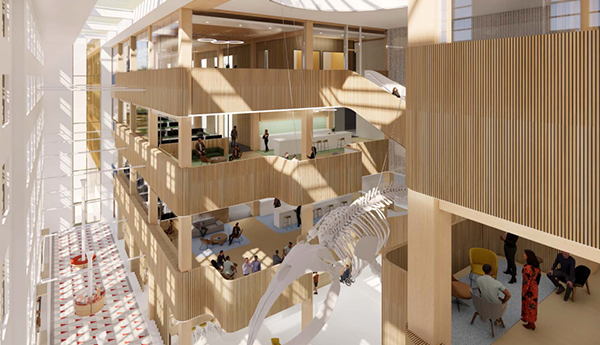
The ASEC project is part of the Laboratories Canada strategy, which falls under Public Services and Procurement Canada (PSPC). When completed, the new centre will be a world-class scientific hub with leading-edge equipment and facilities that will bring together federal scientists and external partners to foster innovative science research. The centre will also build partnerships and engage with the community and Indigenous groups.
Paying homage to Acadian and Indigenous heritage
ASEC will be located at the site of the Fisheries and Oceans Canada Gulf Fisheries Centre (GFC), a recognized federal heritage building that used to be the home of the Collège Notre-Dame d'Acadie, the first Francophone post-secondary educational institution for women in the Maritimes. The site will be fully redeveloped and transformed into a state-of-the-art facility. The GFC's front façade will be reconstructed as part of the new facility to commemorate this important symbol of Acadian heritage. PSPC engaged with the Sisters of Notre-Dame-du-Sacré-Coeur, owners of this college, to make sure that this important heritage informed the design process.
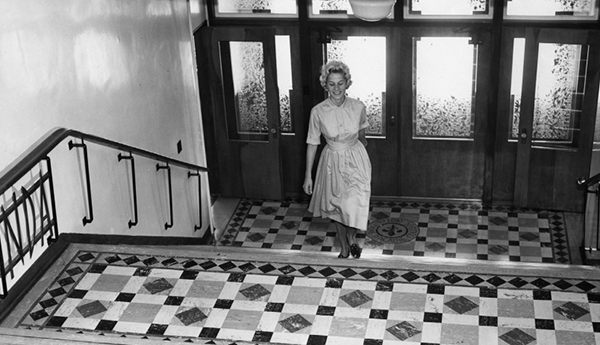
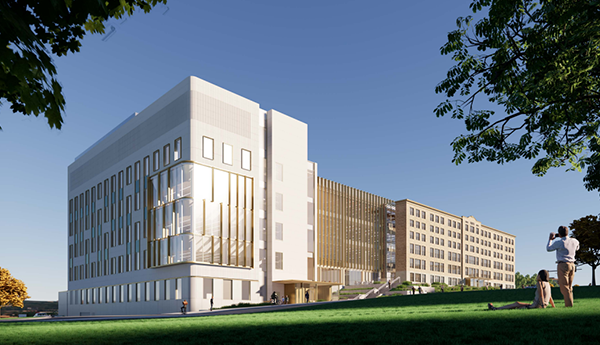
In addition, with the help of an Indigenous facilitator, the design team, PSPC and the science partner departments (the Canadian Food Inspection Agency, the Canadian Space Agency, Environment and Climate Change Canada, Fisheries and Oceans Canada, and the National Research Council of Canada) have been participating in design visioning sessions with local Elders, Indigenous employees, youth and community representatives to gather their ideas. These sessions are being held to ensure that Indigenous partners and the Sisters of Notre-Dame-du-Sacré-Coeur have meaningful roles and opportunities to be partners in the project.
"The extent of engagement we did on this project is a reflection of the government's commitment to reconciliation," explains Jean-Yves Cormier, Engineer and Senior Project Manager in the Atlantic Region.
"The typical process for any design and construction project incorporates ongoing updates and refinements to various design components," details Jean-Yves. "At this point, the focus is given to finalizing finishes and furnishings. This is also the stage where inclusion of the Indigenous, heritage and cultural aspects are being wrapped up into a cohesive design solution."
"This process also ensures that the project meets the needs of the end users, incorporates ideas that have been generated throughout the earlier design stages, and respects the project budget," says Jean-Yves. "Engaging Indigenous partners ensures their perspectives and knowledge are incorporated, leading to more comprehensive and effective project outcomes."
The Mawiomi meeting room
One tangible outcome is the Mawiomi meeting room. It incorporates various aspects of Indigenous culture through its shape, materials and imagery. The word "Mawiomi" means "gathering" in the Mi'kmaq language.
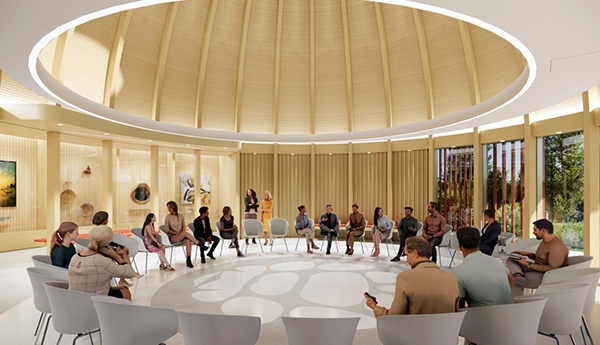
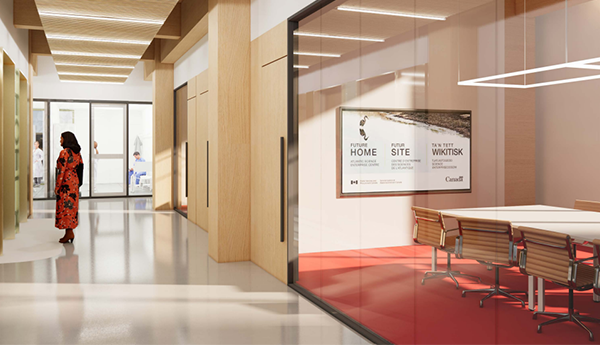
Another highlight will be the wayfinding and orientation system. In initial discussions, there was a desire to represent and link the traditional Mi'kmaq clan system. This evolved into a framework that will be used on different floor levels and lab neighbourhoods.
Building users will have access to an overarching application that recognizes significant plant and animal species related to the work undertaken by the building users, both onsite and in the field. The idea is to encourage the different science-based departments and agencies to work together, like neighbours. "It will be done by applying specific graphics and colours throughout the various levels of the facility," describes Jean-Yves.
Environmental approach
In the Mi'kmaq culture, collaboration is vital to protecting the environment and making sure resources are preserved for generations to come.
The cultural heritage of the site has been taken into careful consideration in terms of the landscape design. Recommendations received during engagement were incorporated into the planning for how the landscape should be used, where features and programs should be, and ultimately how the land should be developed.
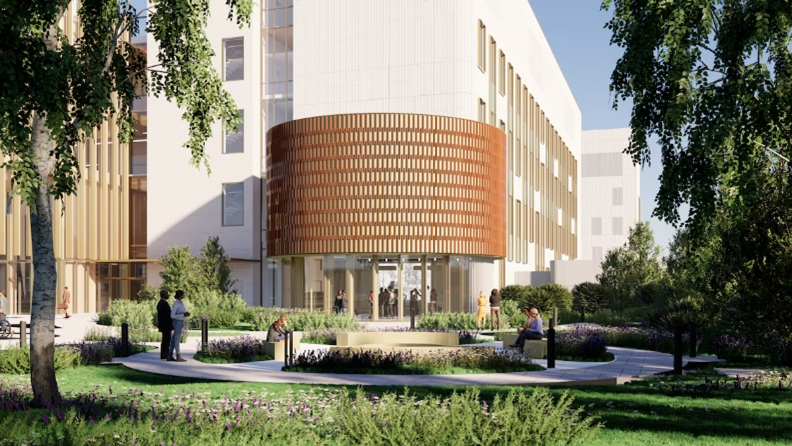
This ambitious project will transform the aging centre into a modern, cutting-edge facility. ASEC will bring together multi-departmental research activities under one roof, making aquatic science more accessible, promoting ocean and freshwater literacy, attracting the next generation of scientists and researchers, and protecting Canada's coastal ecosystems and environments.
To learn more about PSPC employees, projects and services making a difference for Canadians, read other articles found on Our stories.
Page details
- Date modified: